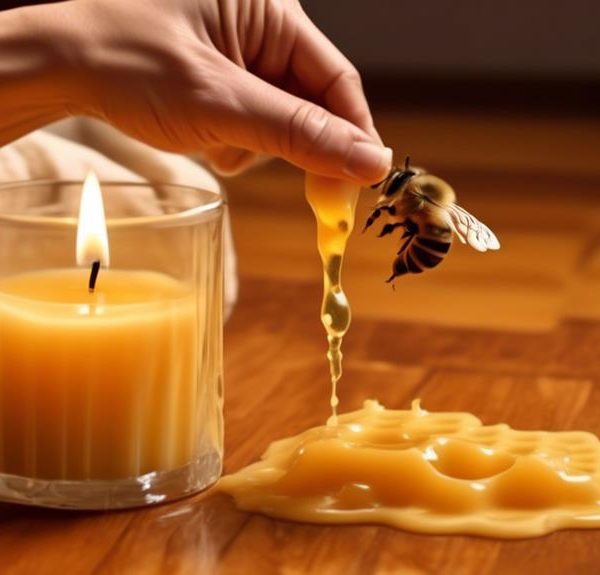Peek into the world of wood care as we explore the controversial question: can you use beeswax on varnished wood?
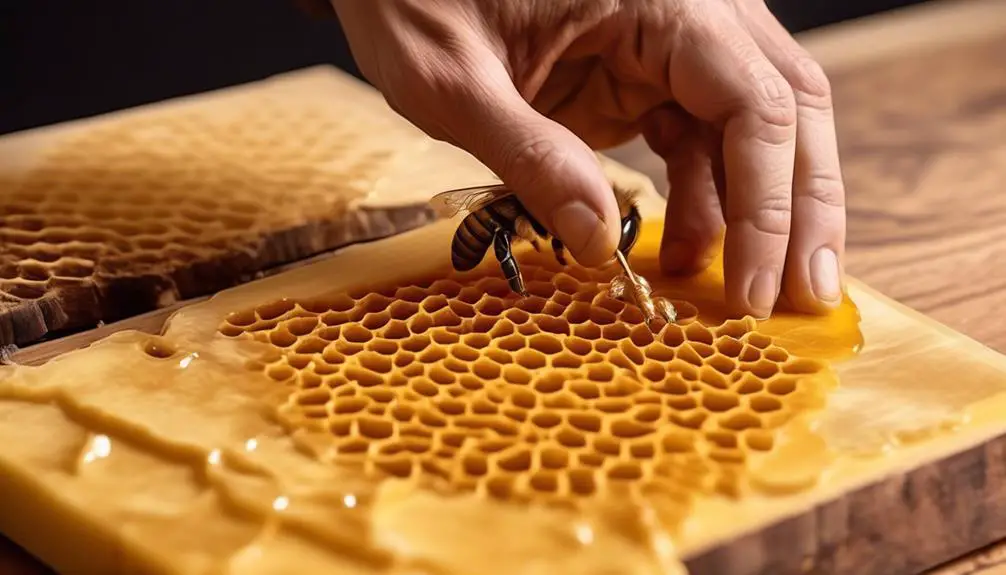
Can You Use Beeswax on Varnished Wood?
Navigating the world of wood maintenance can sometimes feel like trying to find your way through a dense, ancient forest with no compass. You've got a beautifully varnished wooden piece and you're wondering if you can use beeswax on it. Well, you're not alone in this quest. It's a common question that sparks a lot of debates among wood care enthusiasts and professionals alike.
This discussion will explore the properties of beeswax, its effects on varnished wood, and whether it's a beneficial or harmful practice.
So, are you ready to embark on this journey of discovery?
Key Takeaways
- Beeswax can be used on varnished wood to nourish and preserve the wood surface.
- When applying beeswax on varnished wood, it should be done sparingly and buffed thoroughly for best results.
- Beeswax is an all-natural and non-toxic option for wood finishing, but it may require more frequent reapplication compared to synthetic waxes.
- Alternatives to beeswax for wood finishing include carnauba wax, paraffin wax, polyurethane, and shellac, each with their own advantages and disadvantages.
Understanding Beeswax Properties
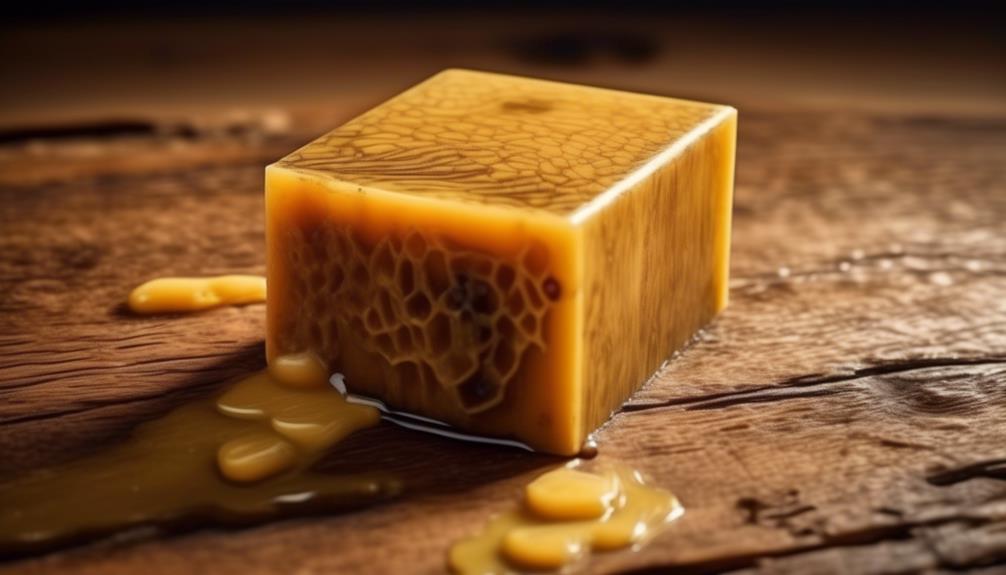
Before you begin using beeswax on your varnished wood, it's important to understand its unique properties and how they can benefit your piece. Beeswax is a natural wax produced in the bee hive of honey bees. Its composition is complex, but it's primarily made of esters, fatty acids, and long-chain alcohols. You'll find beeswax is a superior sealant, forming a hard, protective, and shiny coat on the wood surface.
Its beauty lies in its versatility and durability. Unlike synthetic waxes, beeswax doesn't simply sit on the wood's surface. Instead, it penetrates the wood, nourishing and preserving it. This results in a natural glow that enhances the wood's grain and color.
Beeswax is also hydrophobic, meaning it repels water. This characteristic makes it an excellent choice for protecting your wood from moisture damage. Additionally, it's non-toxic, making it safe for you and the environment.
Lastly, remember that beeswax requires a bit more effort to apply than other waxes due to its hard consistency. However, the benefits it brings to your varnished wood are worth the extra time and effort. Understanding these properties will help you make the most of this wonderful natural product.
The Basics of Varnished Wood
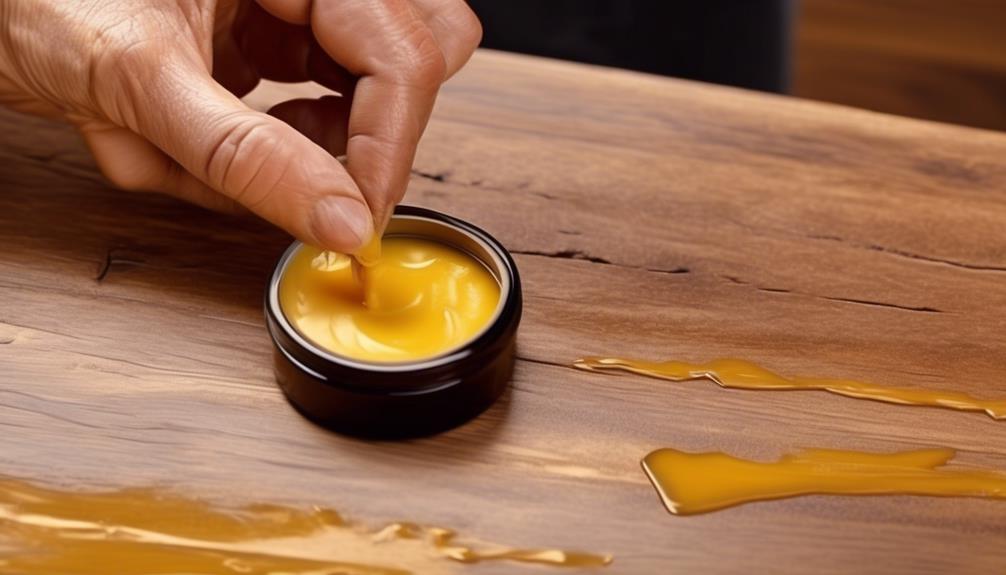
To effectively use beeswax on your varnished wood, you'll need to grasp the basics of varnished wood and its unique characteristics. Varnish is a clear, transparent coating applied to wood to enhance its appearance and protect it from damage. It's typically composed of a drying oil, a resin, and a thinner or solvent.
The primary function of varnish is to create a hard, protective shell over the wood surface, defending it from scratches, moisture, and other potential harms. It also provides a glossy, aesthetically pleasing finish that accentuates the natural beauty and grain of the wood.
When applying beeswax to varnished wood, it's crucial to remember that varnish is a sealant. This means it's less porous than untreated wood, and it won't absorb the beeswax as readily. Therefore, you'll need to apply the beeswax more sparingly and buff it thoroughly to achieve the desired sheen.
Understanding varnished wood's properties is fundamental when deciding to use beeswax. It's not just about slapping on a layer of beeswax; it's about considering the composition of your wood, its current state, and how the beeswax will interact with it. With this knowledge, you can care for your varnished wood effectively while maintaining its luster and longevity.
Beeswax Application on Wood
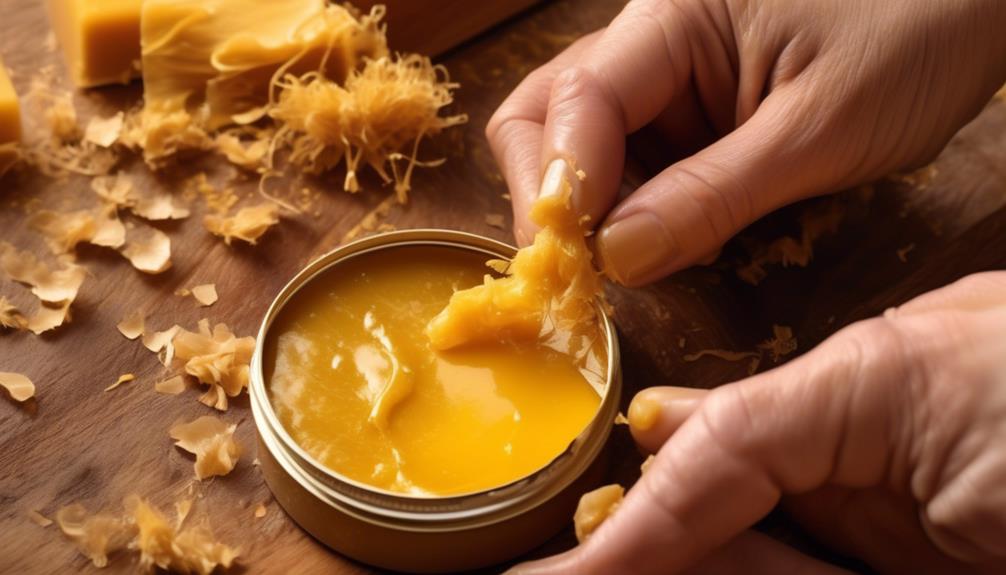
Armed with an understanding of varnished wood's properties, you're now ready to learn how to properly apply beeswax to enhance its durability and shine. The process is simpler than you might imagine, but requires attention to detail.
Start with a clean, dry surface. Dust off any particles or dirt on your wood piece, as these could become trapped under the beeswax layer and create a less-than-perfect finish. Once cleaned, apply a small amount of beeswax to a soft cloth or rag. Remember, a little goes a long way. Rub the cloth in a circular motion across the wood surface. This helps the wax penetrate the varnish and reach the wood grain.
After you've covered the entire surface, let it sit for a few minutes. This allows the beeswax to bond with the varnish. Then, take a clean cloth and buff the surface, again in circular motions, until you achieve a gleaming, polished shine.
Beeswax not only enhances the look of your varnished wood but also offers an added layer of protection against wear and tear. With proper application, you'll be able to maintain the beauty of your wood pieces for years to come.
Pros and Cons of Beeswax

When considering the use of beeswax on varnished wood, it's important to weigh the pros and cons to ensure it's the right fit for your needs.
Starting with the pros, beeswax is all-natural and non-toxic, making it a safe option for your home. It prevents wood from drying out, enhances the wood's natural color and grain, and gives it a warm, soft glow. Unlike other waxes, beeswax doesn't build up over time, so you won't have issues with wax buildup.
However, there are also some cons to consider. The application process can be time-consuming, as beeswax needs to be reapplied more frequently than synthetic waxes. It also doesn't provide as strong of a protective barrier, so it's not the best choice if your wood will be exposed to heavy wear and tear. Furthermore, beeswax can darken the wood slightly, which may not be desirable if you want to maintain the wood's original color.
In the end, the decision to use beeswax on varnished wood depends on your personal preferences and the specific needs of your wood pieces.
Alternatives to Beeswax for Wood
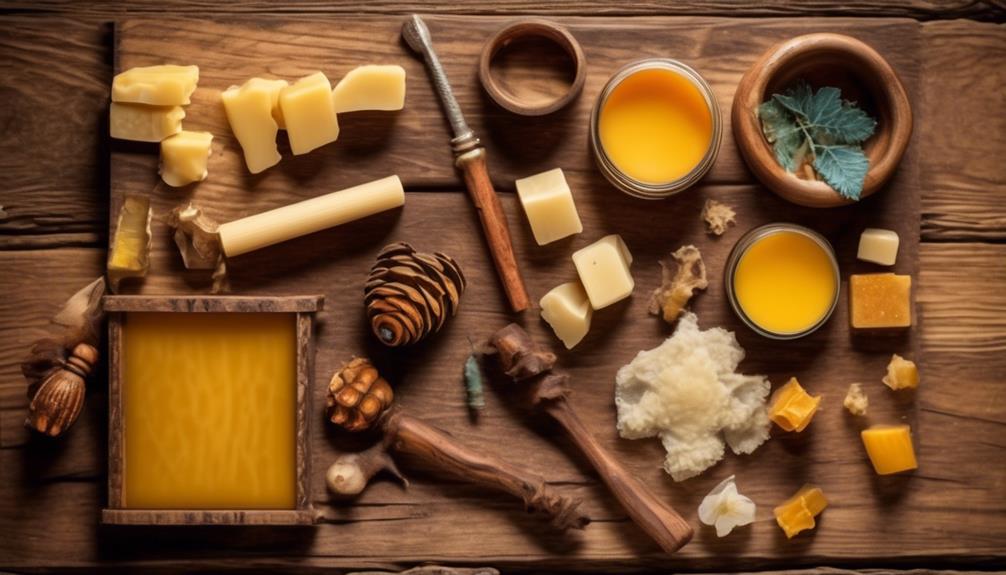
While beeswax is a popular choice for treating varnished wood, you've got a handful of other options that might better suit your specific needs.
Firstly, you can consider carnuba wax. It's a plant-based wax that's harder than beeswax, offering a higher gloss finish and excellent durability. This makes it a great choice if you're looking for a more shiny, resilient coating. However, it's often mixed with other waxes to make it easier to apply.
Secondly, paraffin wax is a petroleum-based product that's quite cheap and easy to use. It provides a decent protective layer, but it's not as natural or environmentally friendly as beeswax or carnuba wax.
Thirdly, you could use polyurethane, a synthetic resin that provides a high-gloss, durable finish. It's more resistant to water and scratches than wax, making it a good option for high-traffic areas.
Lastly, there's shellac, a natural resin secreted by the lac bug. It offers a high-gloss finish and is easy to apply and reapply, but it's not as durable as other options.
Frequently Asked Questions
How Does Beeswax Interact With Other Finishes on Varnished Wood?
When you apply beeswax to varnished wood, it interacts positively. It doesn't harm the finish but instead adds a protective, lustrous layer. The wax fills in minor surface imperfections, enhancing the wood's natural beauty.
However, don't expect it to repair significant damage. Always test a small, hidden area first.
It's also important to remember, you'll need to periodically reapply the beeswax to maintain its benefits.
Can Beeswax Be Used on Varnished Wood Furniture That Is Used Outdoors?
Yes, you can use beeswax on varnished wood furniture that's used outdoors. Beeswax provides a protective barrier against moisture and dirt, while maintaining the wood's natural beauty.
However, remember that it's not a permanent solution. You'll need to regularly reapply it, especially after rain or heavy dew.
Also, it won't provide the same level of UV protection as a dedicated outdoor varnish would. So, it's a good choice if the varnished wood isn't exposed to harsh weather conditions.
Are There Any Specific Brands of Beeswax That Are Better for Use on Varnished Wood?
Yes, you can find specific brands of beeswax that are great for varnished wood.
Howard Feed-N-Wax is a popular choice, known for its superior conditioning properties.
It's a beeswax and orange oil blend, perfect for enhancing the natural beauty and depth of grain in finished and unfinished wood.
Always remember, before applying any product, it's best to test it on a small, inconspicuous area first.
How Often Should Beeswax Be Reapplied on Varnished Wood Surfaces?
You should reapply beeswax to your varnished wood surfaces about once every six months. However, this can vary based on the wear and tear of the item. If it's frequently used, you might need to apply more often.
Always remember to clean the surface thoroughly before reapplying. This ensures the beeswax adheres properly and provides the protective layer you're looking for.
It's a simple process that'll keep your wood looking great.
Can Beeswax Be Used to Restore Older, Damaged Varnished Wood Pieces?
Yes, you can use beeswax to restore older, damaged varnished wood pieces. It's a great choice because it not only cleans and polishes, but also reconditions the wood. Just apply a thin layer, let it dry, then buff it out.
It'll bring out the wood's natural beauty and give it a fresh new look. But remember, don't overuse it – a little goes a long way!
Conclusion
In conclusion, you certainly can use beeswax on varnished wood. It offers a natural, non-toxic way to enhance the shine and durability of the wood.
However, consider the downsides like the potential for buildup and the effort required for application. If these concern you, explore other alternatives.
Remember, the perfect finish for your wood depends on your specific needs and preferences.

